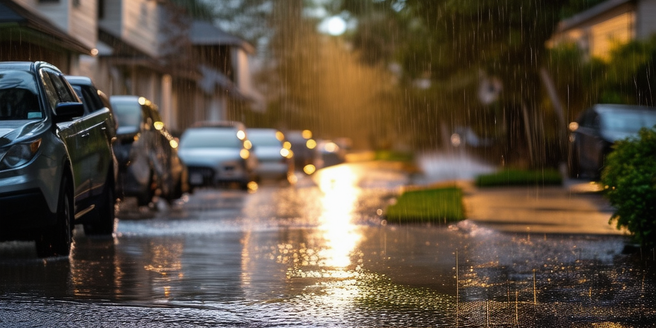
Understanding Flood Risks
Floods can strike unexpectedly, devastating homes and communities. Understanding flood risks begins with identifying factors such as geographical location, climate, and recent weather patterns. Areas near water bodies or in low-lying regions are particularly susceptible. In fact, historical flood data can provide insight into future risk levels. It’s crucial to stay informed about weather forecasts and warnings during the rainy season. Moreover, proper drainage systems can mitigate potential flooding damage. Additionally, climate change has amplified the frequency and intensity of storms, increasing flooding risks globally. Homeowners should consult flood maps and local government resources to assess their property’s vulnerability. This knowledge is the first step in crafting a comprehensive flood prevention strategy, safeguarding both homes and lives.
Assessing Your Home’s Vulnerabilities
Identifying your home’s flood vulnerabilities is crucial in mitigating potential damage. Start by evaluating the property’s elevation and proximity to flood zones. Inspect the foundation, basement, and entry points for possible water ingress. Look into local flood history to understand potential risks better. Stay informed about weather forecasts during the rainy season to anticipate potential flooding events. Consider installing flood sensors and alarms for early warning. Check for cracks or gaps that could allow floodwater inside. Examine the landscape and grading around the house, as improperly sloped terrain can direct water towards the structure. Regularly maintain gutters and downspouts to ensure proper rainwater diversion. By thoroughly assessing weak points, homeowners can prioritize necessary improvements and fortify their defenses against floodwaters.
Implementing Effective Drainage Solutions
Proper drainage solutions are essential for reducing flood risks around your home. Begin by ensuring that rain gutters and downspouts are clear of debris, directing water away from the foundation. It’s also important to assess the landscaping around your property to ensure it complements your drainage efforts. Installing French drains or trench drains can help manage surface water by channeling it away from vulnerable areas. Utilizing these methods can significantly decrease the chance of water damage. Grading the yard to slope away from the house further prevents water pooling. Consider using swales or rain gardens to naturally absorb excess runoff. Regular maintenance and inspections of these systems are vital to their effectiveness, providing long-term protection against potential flooding issues.
Utilizing Flood-Resistant Materials
Incorporating flood-resistant materials into your home can greatly reduce damage during a flood event. Use concrete, pressure-treated lumber, and marine-grade plywood for structural elements. These materials are more durable and resistant to water damage. Additionally, consider sealing any gaps or openings that might allow water to infiltrate your home. Installing flood barriers can further protect entry points from rising water levels. For flooring, opt for ceramic tiles or waterproof vinyl, which can withstand prolonged water exposure. Elevate utilities and appliances above potential flood levels to prevent electrical hazards. Ensure that internal walls are constructed with water-resistant materials, such as cement board, to minimize deterioration. These measures not only enhance your home’s resilience but also ease recovery efforts post-flood.
Developing an Emergency Preparedness Plan
Creating an emergency preparedness plan is vital for responding effectively during a flood event. Start by establishing a family communication strategy, including contact information and a designated meeting point. Assemble an emergency kit containing essentials such as food, water, medications, and important documents. It’s also important to have a battery-powered radio to stay informed about weather updates and emergency alerts. To ensure readiness, practice emergency drills with your family periodically. Familiarize all household members with evacuation routes and safety protocols. Regularly review and update the plan to address any changes in family dynamics or environmental conditions. Local community resources and emergency services can offer additional support and guidance, ensuring a swift and organized response to flood emergencies.
